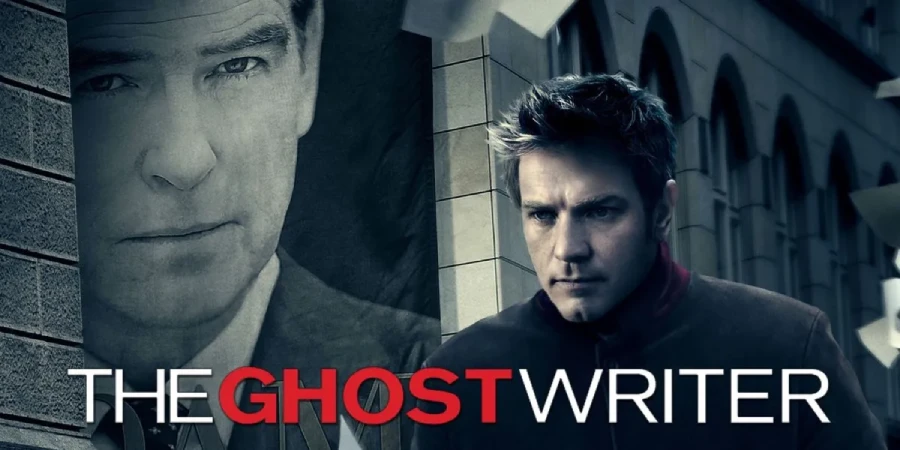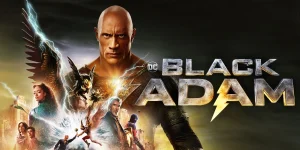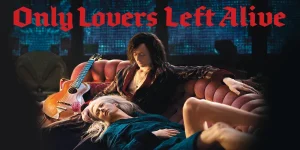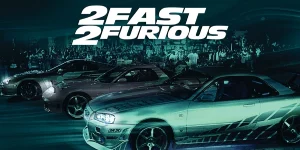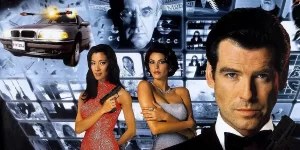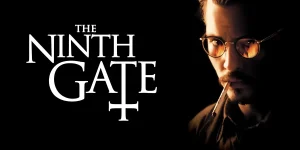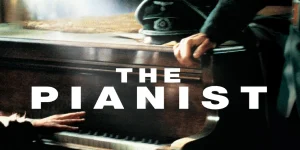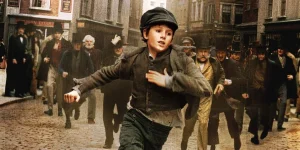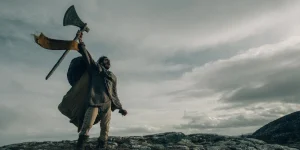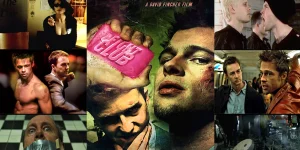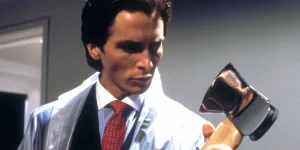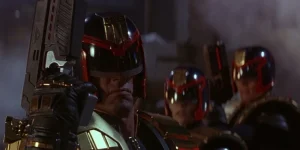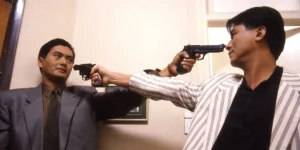Roman Polanski’s The Ghost Writer (2010) is a political thriller steeped in mystery, paranoia, and suspense. Adapted from Robert Harris’s novel The Ghost, it’s a meticulously crafted film that delves into the murky world of politics, betrayal, and identity. Anchored by strong performances and a gripping narrative, this film remains one of the most cerebral and chilling political thrillers of its decade.
Table of Contents
ToggleDetailed Summary
The Setup: A Ghost with a Job
The film opens with the mysterious death of a ghostwriter who had been working on the memoirs of former British Prime Minister Adam Lang (played by Pierce Brosnan). His body is found washed up on the shore, and the circumstances around his death are unclear.
To keep the project on track, the publishers hire a new ghostwriter, played by Ewan McGregor (his character is never named in the film, adding to the ghost-like identity). He is promised a large sum of money and travels to a secluded estate in Martha’s Vineyard where Lang is staying with his wife Ruth (Olivia Williams) and his team.
From the outset, things feel off. Security is tight, everyone is tense, and the manuscript is guarded like a state secret. The ghostwriter soon finds himself plunged into a web of political intrigue that may be more dangerous than he ever imagined.
The Investigation: Following a Trail of Secrets
As the ghostwriter digs deeper into Lang’s past and begins reviewing the original manuscript, he becomes suspicious. He finds inconsistencies and odd details, especially concerning Lang’s early political affiliations and his connection to a mysterious figure named Paul Emmett (Tom Wilkinson).
His suspicions are amplified after a former colleague of Lang publicly accuses him of war crimes, including handing over suspected terrorists to the CIA for torture. Protests erupt outside the estate. Tensions within the house increase as Lang’s past is picked apart in the media.
The ghostwriter also starts to suspect that Lang’s wife Ruth may know more than she’s letting on—or even be complicit in whatever is going on. As his investigation continues, the new ghost uncovers a possible link between Lang and American intelligence.
The Danger Escalates
After narrowly escaping a potentially fatal encounter (involving a suspiciously malfunctioning car), the ghostwriter continues following the breadcrumbs left by the previous writer. A crucial clue is hidden in the manuscript’s first draft—a cleverly coded message that hints at something sinister.
The mystery leads him to an academic, Paul Emmett, who denies any real connection to Lang. However, the ghostwriter senses a cover-up. He becomes more convinced that Lang may have been a CIA asset all along, planted in British politics to serve U.S. interests.
Movie Ending
The climax comes in a subdued but devastatingly clever sequence at a book release party in London. The ghostwriter, now in possession of the original manuscript with its hidden message, discovers the truth: Ruth Lang, not Adam Lang, was the key CIA contact all along. She was recruited while at university, and it was through her influence that Lang’s political career—and decisions—were shaped.
In a chilling final moment, the ghostwriter writes a note revealing the truth and discreetly hands it to Ruth during the event. As she realizes what’s happened, her expression changes, but she maintains her composure.
Moments later, as the ghostwriter exits the party, the pages of his manuscript blow through the street. We don’t see him again, but we hear a loud crash. It is heavily implied that he is killed, possibly by a car or an orchestrated hit, silenced for discovering the truth.
The ending is hauntingly abrupt, matching the film’s tone of quiet, creeping dread and the inescapability of power and corruption.
Are There Post-Credits Scenes?
No, The Ghost Writer does not have a post-credits scene. The story concludes definitively with the final, tragic implication of the ghostwriter’s fate. There’s no Marvel-style teaser, just silence—a silence that says everything.
Type of Movie
- Genre: Political Thriller / Mystery / Drama
- Style: Slow-burn, noir-tinged, cerebral
- Tone: Suspenseful, paranoid, intelligent
Cast
- Ewan McGregor as The Ghost
- Pierce Brosnan as Adam Lang
- Olivia Williams as Ruth Lang
- Kim Cattrall as Amelia Bly
- Tom Wilkinson as Paul Emmett
- Timothy Hutton as Sidney Kroll
- Eli Wallach as Old Man on the Island
- James Belushi as John Maddox
Film Music and Composer
The haunting, suspenseful score was composed by Alexandre Desplat, who captures the film’s ominous mood with restrained elegance. The music is subtle yet tension-laden, underlining the thriller’s mood rather than overwhelming it.
Filming Locations
Although set in Martha’s Vineyard, most of the film was actually shot in Germany and France due to Polanski’s legal situation at the time.
Key locations include:
- Usedom, Germany – The beach scenes and the coastal setting were filmed here.
- Babelsberg Studio, Potsdam – Indoor sets like Lang’s estate were constructed here.
- Berlin – Several urban scenes and interiors were shot in the city.
The muted, overcast visuals of these locations reinforce the film’s eerie, cold tone, serving the plot’s atmosphere perfectly.
Awards and Nominations
- Best Director – European Film Awards (Winner)
- Best Actor (Ewan McGregor) – European Film Awards (Nominee)
- Silver Bear (Best Director) – Berlin International Film Festival (Winner)
- César Awards (France) – Won Best Director, Best Adaptation, and Best Original Score
- BAFTA and Golden Globe buzz, though no major wins
Behind the Scenes Insights
- Roman Polanski directed the film under house arrest in Switzerland.
- Ewan McGregor and Pierce Brosnan filmed their scenes separately for many key moments due to scheduling constraints.
- The original novel’s author, Robert Harris, co-wrote the screenplay with Polanski.
- The manuscript prop that hides the secret message was designed with real cipher mechanics in mind—some fans have actually tried to decode it.
- Brosnan’s performance was reportedly inspired by Tony Blair, whose real-life decisions bear thematic similarities to Lang’s character.
Inspirations and References
- The film is based on the novel The Ghost by Robert Harris, who was once a political journalist.
- Harris was inspired by former UK Prime Minister Tony Blair, especially in relation to the Iraq War and his ties to the United States.
- The film draws stylistic inspiration from Alfred Hitchcock, especially in its quiet build-up and moments of claustrophobic paranoia.
Alternate Endings and Deleted Scenes
There are no publicly known alternate endings for the film. Polanski is known for his tightly controlled storytelling, and the ending is considered a definitive part of the film’s message. However, some extended scenes showing more of the protest movement and Lang’s earlier political career were reportedly trimmed for pacing.
Book Adaptation and Differences
While the film closely follows the book, there are minor differences:
- The novel contains more background on the ghostwriter’s personal life.
- The revelation about Ruth’s CIA link is more subtle in the book; the film makes it slightly more overt.
- The novel leaves the ghostwriter’s death even more ambiguous—it’s suggested but not depicted.
Memorable Scenes and Quotes
Key Scenes
- The discovery of the secret message in the manuscript using the first word of each chapter.
- The tense confrontation between the ghostwriter and Paul Emmett.
- The silent exchange between the ghostwriter and Ruth at the book party.
- The final shot of papers flying through the London streets after the crash.
Iconic Quotes
- “You don’t ask questions of a ghost.”
- “Lang isn’t in charge. He never was.”
- “You don’t write what they did. You write what they say they did.”
- “You’re just the ghost, remember?”
Easter Eggs and Hidden Details
- The ghostwriter remains unnamed throughout the film—he’s literally a “ghost.”
- The script uses actual historical references to Tony Blair and CIA rendition scandals.
- Lang’s private jet and style mirror those of real political leaders—subtle visual cues hint at real-world parallels.
- The manuscript’s hidden code uses a classic literary cipher technique, which actually works if decoded.
Trivia
- Polanski edited the film entirely while under house arrest.
- The title was changed from The Ghost to The Ghost Writer in the U.S. to avoid confusion with horror films.
- The film was finished in record time, largely due to Polanski’s limited movement and full focus on post-production.
- It was one of the rare thrillers to win major European cinema awards in multiple categories.
Why Watch?
- If you’re into intelligent, slow-burn political thrillers.
- For a gripping, atmospheric mystery with rich characters.
- To experience a story that blends politics, espionage, and personal betrayal.
- For one of the most satisfying and haunting endings in modern cinema.
Director’s Other Movies
- Chinatown (1974)
- The Pianist (2002)
- Rosemary’s Baby (1968)
- Repulsion (1965)
- Tess (1979)
- Frantic (1988)

